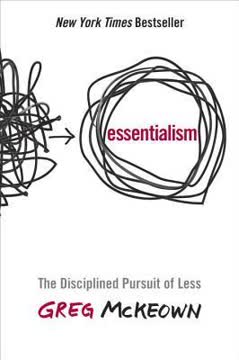Key Takeaways
1. Embrace a growth mindset to overcome educational challenges
There may be bad teachers, but not bad students.
Shift your perspective. Recognize that your potential is not fixed but can be developed through effort and perseverance. Instead of viewing challenges as insurmountable obstacles, see them as opportunities for growth and learning. This mindset shift is crucial for academic success and personal development.
Take responsibility for your learning. Rather than blaming external factors for poor performance, focus on what you can control. Seek out resources, ask for help when needed, and actively engage in your education. Remember that every setback is a chance to learn and improve, not a reflection of your inherent abilities.
2. Create an effective study environment for optimal learning
Your Room Is The Reflection Of Your Mind!
Organize your space. A clutter-free, well-organized study area can significantly impact your focus and productivity. Keep only essential study materials within reach, and ensure proper lighting and ventilation. Personalize your space with motivational quotes or visual aids that inspire you to learn.
Minimize distractions. Create a "no-gadget" zone during study time to avoid the temptation of social media and other digital distractions. If you struggle with self-control, consider asking a parent or guardian to monitor your study sessions. Remember that your study environment plays a crucial role in shaping your learning habits and outcomes.
3. Master memory techniques to retain vast amounts of information
If Four Important 10 Mark Answers Are Retained Using Stories, You Get A Cool 40 Marks Without Much Effort!
Utilize creative association. Employ techniques like the "Bedtime Stories" method to create vivid, imaginative narratives that link key concepts together. This approach leverages your brain's natural ability to remember stories, making it easier to recall complex information during exams.
Implement mnemonic devices. Use tools like acronyms, rhymes, and visual pegs to create memorable associations for important facts and figures. For example:
- Acronyms: VIBGYOR for colors of the rainbow
- Rhymes: "In 1492, Columbus sailed the ocean blue"
- Visual pegs: Associating numbers with objects (1 = lamppost, 2 = swan, etc.)
These techniques can dramatically improve your ability to retain and recall large amounts of information across various subjects.
4. Develop efficient note-taking strategies for better comprehension
Notes should be short, to the point, well organized and an easy read.
Embrace active note-taking. Move beyond passive copying of information to actively engaging with the material. Use techniques like the Cornell System, mind mapping, or bullet journaling to organize information in a way that enhances understanding and retention.
Customize your approach. Experiment with different note-taking methods to find what works best for you and the subject matter. For example:
- Cornell System: Divide your page into sections for notes, cues, and summary
- Mind mapping: Create visual representations of interconnected concepts
- Bullet journaling: Use symbols and short phrases for quick, organized notes
Remember to review and revise your notes regularly to reinforce learning and identify areas that need further clarification.
5. Leverage smart time management to balance studies and life
If you don't run your own life, somebody else will.
Prioritize tasks effectively. Use tools like the Priority Matrix to categorize your activities based on importance and urgency. This helps you focus on high-impact tasks and avoid wasting time on less critical activities. Regularly reassess your priorities to ensure you're making the most of your time.
Create a structured schedule. Develop a weekly planner that allocates time for studying, extracurricular activities, and personal time. Be realistic in your time estimates and include buffer periods for unexpected events. Key elements of effective time management include:
- Breaking large tasks into smaller, manageable chunks
- Setting specific, achievable goals for each study session
- Incorporating regular breaks to maintain focus and productivity
- Regularly reviewing and adjusting your schedule based on your progress and changing needs
6. Cultivate public speaking skills to boost confidence and success
First, A Speaker Must Grab The Attention Of The People. Only Then Can He Give Gyaan Or Convey A Message.
Master the art of attention-grabbing. Learn to captivate your audience from the start using techniques like humor, storytelling, or provocative questions. A strong opening sets the tone for your entire presentation and helps you establish credibility with your listeners.
Develop a structured approach. Organize your speeches using a clear framework:
- Introduction: Hook the audience and preview main points
- Body: Present your key ideas with supporting evidence
- Conclusion: Summarize main points and end with a memorable closing
Practice regularly to build confidence and refine your delivery. Remember that effective public speaking is a valuable skill that can enhance your academic performance and future career prospects.
7. Implement strategic study habits for consistent academic improvement
Even Sachin Tendulkar needed a coach.
Seek guidance and support. Don't hesitate to ask for help from teachers, peers, or tutors when you encounter difficulties. Building strong relationships with educators can provide valuable insights and resources to enhance your learning experience.
Adopt a holistic approach to learning. Integrate various strategies to maximize your academic performance:
- Attend classes regularly and actively participate in discussions
- Review material consistently rather than cramming before exams
- Practice self-care through proper nutrition, exercise, and sleep
- Use practice tests and past papers to familiarize yourself with exam formats
- Teach concepts to others to reinforce your own understanding
Remember that becoming a top student requires consistent effort and a willingness to adapt your strategies as needed. Embrace the journey of continuous improvement and celebrate your progress along the way.
Last updated:
FAQ
1. What is "Six Secrets Smart Students Don’t Tell You" by Chandan Deshmukh about?
- Student Success Blueprint: The book is a practical guide for students aiming to improve their academic performance and overall approach to learning.
- Six Core Secrets: It reveals six key strategies or "secrets" that top-performing students use, often unconsciously, to excel in their studies.
- Personal Stories & Humor: Chandan Deshmukh uses relatable anecdotes, humor, and real-life examples from his own school days to make the advice engaging and memorable.
- Actionable Tools: The book provides step-by-step methods, exercises, and templates that students can immediately apply to their study routines.
- Focus on Mindset: Beyond academics, it emphasizes the importance of attitude, self-discipline, and breaking out of comfort zones for long-term success.
2. Why should I read "Six Secrets Smart Students Don’t Tell You" by Chandan Deshmukh?
- Practical, Tested Advice: The book offers actionable tips and techniques that have been tried and tested by high-achieving students.
- Relatable and Entertaining: Written in a conversational, humorous style, it makes learning about study skills enjoyable rather than tedious.
- Addresses Common Struggles: It tackles real issues students face, such as procrastination, lack of motivation, and ineffective study habits.
- Holistic Approach: The book goes beyond rote learning, focusing on mindset, environment, and self-management for comprehensive growth.
- Suitable for All Levels: Whether you’re a struggling student or aiming for the top, the book’s advice is adaptable to different academic situations.
3. What are the six secrets revealed in "Six Secrets Smart Students Don’t Tell You" by Chandan Deshmukh?
- Secret #1: Load-Aim-Shoot: Goal setting using the CPA-TEI method (Constructive, Practical, Arithmetical, Time-bound, Elastic, Individual).
- Secret #2: Peacock with Two Chairs: Creating an optimal study environment and using the two-chair technique for reading and recall.
- Secret #3: A 500 Page Book – On The Tip of Your Tongue: Memory techniques like storytelling, pegging, acronyms, and association with familiar routes.
- Secret #4: Tuition Fees in the Bank: The value of self-study over expensive tutorials, and the Naughty-Note technique for effective note-making.
- Secret #5: Stand and Deliver: Building confidence, communication skills, and relationships using public speaking and Dale Carnegie’s principles.
- Secret #6: Time Machine: Mastering time management with tools like the Priority Matrix and Weekly Planner.
4. How does Chandan Deshmukh define and explain the "Load-Aim-Shoot" goal-setting method in "Six Secrets Smart Students Don’t Tell You"?
- CPA-TEI Framework: Goals should be Constructive, Practical, Arithmetical, Time-bound, Elastic, and Individual, ensuring they are positive, realistic, measurable, timely, flexible, and personal.
- Step-by-Step Process: The book provides a template for breaking down long-term goals into 5-year, 1-year, 6-month, and 1-month increments.
- Visualization: Emphasizes the importance of visualizing success before taking action, as illustrated by the Anil Kumble cricket story.
- Avoiding Common Pitfalls: Warns against setting negative, unrealistic, or vague goals, and encourages regular review and adjustment.
5. What is the "Peacock with Two Chairs" technique in "Six Secrets Smart Students Don’t Tell You" and how does it improve study effectiveness?
- Optimizing Study Environment: The book stresses that 70% of results depend on the study atmosphere, advocating for a clean, organized, and inspiring space.
- Six Rules for Study Space: Includes Sparkle Shine (cleanliness), Radar Range (materials within reach), Right-click Reload (no distractions), Yogananda (proper posture), Peacock (motivational visuals), and the Two-Chair Technique.
- Two-Chair Technique: Use one chair for reading/comprehension and another for recall, physically changing seats to reinforce memory and focus.
- Personalization: Encourages students to decorate their space with affirmations, goals, and creative elements to boost motivation.
6. What memory techniques does "Six Secrets Smart Students Don’t Tell You" by Chandan Deshmukh recommend for mastering large amounts of information?
- Bedtime Stories: Turn key points into creative stories to make information memorable and easy to recall.
- Pegging System: Associate numbers with familiar objects (pegs) and link them to keywords for ordered recall.
- Acronyms and Mnemonics: Use acronyms (like VIBGYOR) and creative sentences to remember lists and sequences.
- Route Association ("Go Home" Method): Link information to familiar routes or landmarks for sequential memory.
- Regular Practice: Reuse and reinforce these techniques for different subjects and chapters to improve retention.
7. How does "Six Secrets Smart Students Don’t Tell You" by Chandan Deshmukh challenge the necessity of tutorials and promote self-study?
- Cost-Benefit Analysis: The book calculates the time and money spent on tutorials, arguing that self-study is more efficient and cost-effective.
- Fear-Based Decisions: Highlights how students and parents often join tutorials out of fear of missing out, not actual need.
- Naughty-Note Technique: Advocates for making personalized, concise notes as a superior alternative to relying on guides or tutorial materials.
- Empowerment: Encourages students to take responsibility for their learning, seek help directly from teachers, and invest in self-improvement.
8. What are the recommended note-making methods in "Six Secrets Smart Students Don’t Tell You" by Chandan Deshmukh?
- Gimme Bullets: Use bullet points to organize information hierarchically, making it easier to review and recall.
- Spidey-Map (Mind Map): Create visual diagrams connecting main ideas and subpoints, stimulating both sides of the brain.
- Cornell System: Divide notes into keywords, detailed notes, and a summary section, using the NINR (Note, Introspect, Narrate, Revise) process.
- Keep It Simple: Notes should be brief, relevant, and in your own handwriting, focusing on key concepts and triggers for memory.
9. How does "Six Secrets Smart Students Don’t Tell You" by Chandan Deshmukh address time management for students?
- Priority Matrix: Categorize tasks into important/urgent, important/not urgent, not important/urgent, and not important/not urgent to focus on what matters most.
- Weekly Planner: Plan out tasks and study sessions for each subject across the week, ensuring balanced and consistent progress.
- Breaks and Balance: Recommends the 50-10 rule (50 minutes study, 10 minutes break) and mixing subjects to maintain energy and interest.
- Avoiding "No-Timeria": Identifies and offers solutions for the common excuse of "no time," promoting proactive scheduling and prioritization.
10. What are the "10 Step-By-Step Approaches To Be The Star Of The Class" in "Six Secrets Smart Students Don’t Tell You"?
- Start Early and Consistent: Begin studying from day one, maintaining a steady pace rather than cramming.
- Optimize Study Sessions: Use the right environment, group size, and time management tools for effective learning.
- Take Strategic Breaks: Incorporate regular, meaningful breaks to boost productivity.
- Seek Help and Clarify Doubts: Build rapport with teachers and ask questions early.
- Maintain High Attendance: Consistent class attendance correlates with better performance.
- Eat and Rest Well: Proper nutrition and sleep are essential for brain function.
- Cultivate the Right Attitude: Focus on effort and attitude over ability or external help.
- Use Smart Study Techniques: Apply memory and note-making tools for efficient learning.
- Bounce Back from Setbacks: Treat failures as learning opportunities and keep a positive outlook.
- Balance Study and Life: Engage in co-curricular activities and reward yourself for achievements.
11. What are the best quotes from "Six Secrets Smart Students Don’t Tell You" by Chandan Deshmukh and what do they mean?
- “Vision without action is a daydream. Action without vision is a nightmare.” – Japanese proverb: Stresses the importance of combining clear goals with consistent effort.
- “There may be bad teachers, but not bad students.”: Emphasizes personal responsibility and the potential for every student to succeed.
- “Don’t be fooled by the calendar. There are only as many days in the year as you make use of.” – Charles Richards: Highlights the value of effective time management.
- “The best revenge is massive success.” – Frank Sinatra: Encourages students to channel setbacks into motivation for achievement.
- “Too many of us are not living our dreams because we are living our fears.” – Les Brown: Urges readers to overcome fear-based decisions and pursue their true potential.
12. What are the key takeaways and actionable advice from "Six Secrets Smart Students Don’t Tell You" by Chandan Deshmukh?
- Mindset Matters Most: Success is driven by attitude, self-belief, and willingness to step out of comfort zones.
- Personalized Systems Work: Tailor your goals, study environment, memory techniques, and notes to fit your unique needs and strengths.
- Self-Study is Powerful: With the right tools and discipline, self-study can outperform expensive tutorials.
- Balance and Well-being: Academic achievement is supported by good nutrition, sleep, breaks
Review Summary
Six Secrets Smart Students Don't Tell You receives mixed reviews, with an average rating of 3.94/5. Many readers find it helpful for students, praising its straightforward approach, humor, and practical tips for improving study habits. The book is commended for its simple language and relatable examples. Some reviewers appreciate its potential to change students' academic performance. However, critics argue that the information is basic and could have been condensed. Overall, it's recommended for school students seeking to enhance their learning strategies and academic success.
Similar Books









Download PDF
Download EPUB
.epub digital book format is ideal for reading ebooks on phones, tablets, and e-readers.




